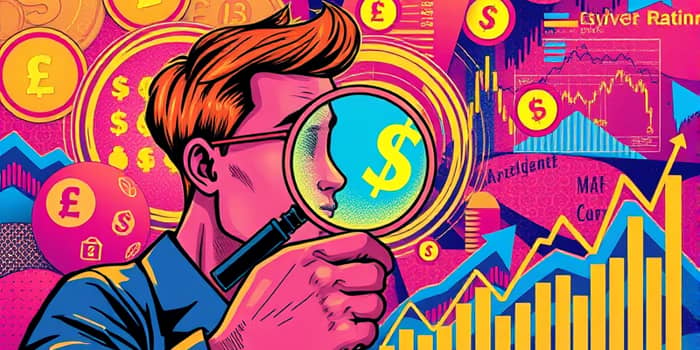
In a world dominated by rapid-fire financial news, learning to separate signal from market noise can safeguard your wealth and sanity. Headlines often mask deeper narratives, hidden risks, and omitted data, so readers need a toolkit for discerning fact from hype.
This article offers a robust framework to analyze market stories critically, empowering you to question assumptions, spot biases, and make informed decisions rather than reacting to every sensational headline.
The first half of 2025 delivered extraordinary volatility in global markets, triggered by policy rhetoric and unexpected events. A proposed series of tariff hikes sent the S&P 500 tumbling 20%, while bond yields surged and the U.S. dollar declined sharply.
When the CBOE Volatility Index (VIX) spiked above historical norms, panic gripped investors. Yet, after policymakers paused the tariff proposals, a relief rally restored much of the losses by mid-May, demonstrating how deeply markets react to fleeting political signals.
Frequent shifts in trade agreements and tariff threats create policy whiplash that unsettles markets. Announcements about deals with the UK and other partners send waves through equities, bonds, and currencies, but can be reversed just as swiftly.
Meanwhile, the International Monetary Fund warns of a slowdown in global growth, citing risks from renewed trade tensions, tightening financial conditions, and slower-than-expected inflation decline. High policy uncertainty is at levels not seen since the early 2000s.
Amid headline noise, fundamental indicators offer a steadier compass. U.S. GDP is projected to reaccelerate in late 2025, buoyed by looser monetary conditions and potential pro-growth measures like deregulation and targeted tax cuts.
The unemployment rate, which rose from a post-pandemic low of 3.4% to around 4.1%, remains below the long-term average of 5.7%. Though labor participation has softened, consumer spending still accounts for roughly 70% of GDP, propping up growth despite global headwinds.
While rising bond yields alarm some investors, they represent opportunities for savers seeking higher returns. Yet, these higher rates also signal investor anxiety about inflation persistence and fiscal policy sustainability.
Critical reading is not a luxury—it’s essential. Most consumers rely on headlines for making investment decisions, yet financial literacy remains low. Asking deeper questions can prevent costly mistakes.
Media outlets often highlight dramatic policy shifts or sudden market swings while downplaying slow-moving forces like aging demographics or supply chain bottlenecks. Words like “whiplash” or “fear gauge spikes” can stoke anxiety and distort perception.
Selective focus on short-term movements may overshadow the broader context provided by institutions such as the IMF or World Bank, which emphasize long-term trends and structural challenges.
A systematic approach helps you peel back the layers of every headline. Always ask:
Combining these queries with cross-referencing from reputable institutional reports can unveil hidden assumptions and provide a clearer picture.
As you scan future headlines, maintain a balanced outlook. Consider:
By applying a critical lens, you transform from a passive consumer of headlines into an empowered investor, able to navigate volatility, discern bias, and seize genuine opportunities.
Your financial decisions deserve more than a cursory glance. Cultivate skepticism, demand context, and build the literacy needed to interpret the ever-shifting narratives in today’s markets.
References













